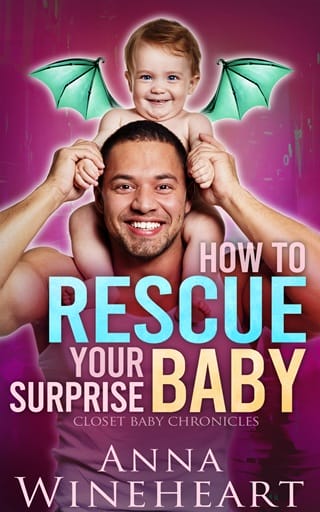CHAPTER 30
“The State calls Mr. John Lockhart.”
Forensic Accountant John Lockhart walked to the stand with an effortless grace. He wore broad-rimmed black glasses and a nice suit. His hair was trimmed, but his shoes were scuffed. He held himself well, and on looks alone, he looked like an expert in something.
Garrett walked to the lectern in front of the jury, placed a folder down, opened it, and read over several lines before he turned his attention to the witness. “Mr. Lockhart, can you please describe your professional expertise?”
“Certainly. I’ve been employed as a consultant with the Charleston Police Department for the past ten years. I’ve been certified as a fraud investigator, and I’m also certified in financial forensics. The Association of Certified Fraud Examiners and the American Institute of Certified Public Accountants issued those certificates. Before this employment, I was a corporate accountant for fifteen years.”
“And what was your role in this investigation?”
“My role was to review all the records associated with Palin Accounting, including IRS statements, bank accounts, and financial reports. Along with my team, I searched through the last five years of the bank accounts managed by Palin Accounting and reviewed all the accounting linked to the Wolfgang Berger Foundation. Due to the complex nature of the payments, I ensured I followed each lead and each avenue for the potentially fraudulent activity. It was a painstaking process, but I thought it was important to leave no stone unturned during this investigation.”
“Did you find any irregularities in the files connected to the Wolfgang Berger Foundation?”
“Yes. In the files associated with the Foundation, I found ten donations registered to the MUSC Shawn Jenkins Children’s Hospital. These were legitimate donations, approved by the board. There was documentation about the donations and records about the board’s decisions to make the donations. But when I searched where the money was transferred to, I could see that five payments didn’t match any account numbers that belonged to the MUSC Shawn Jenkins Children’s Hospital. However, once I looked through Palin Accounting’s bank accounts, I could match payments made by the Foundation. It should be noted that Palin Accounting had twenty-five bank accounts with five different financial institutions, and it took some time to find all these links.”
“Interesting,”
Garrett stated. “Is it normal for an accounting firm to have this many bank accounts?”
“No. It’s unusual. Most firms around this size would have between five and ten bank accounts, most likely with one or two banks. Having twenty-five bank accounts across five different banks sets off alarm bells.”
“Did you investigate all the deposits into those bank accounts?”
“Yes. After I looked at the five deposits from the Foundation, I began to look at other transactions going into the Palin Accounting bank accounts.”
“And what did you find?”
“A lot were legitimate deposits from customer invoices. However, some deposits had a very long paper trail where money was transferred into one account, then another, then another, being split up more and more each time. All these transferred amounts were under the regulatory threshold of $10,000. This is typical behavior for places trying to avoid detection for money laundering. There were fifteen unusual transactions that I focused on. When I traced the money back to the original source, I found that most of the funds had come from cash deposits into ATMs. However, I could not prove this was associated with money laundering.”
“How were the funds recorded?”
“As payments from clients for billable hours, but there was no way the firm could’ve billed for as many hours as it did. For instance, in documentation from Palin Accounting, I found that they were overcharging most of their clients. While they had ten employees, including two support staff who couldn’t perform billable hours, they should’ve only been charging 15,000 billable hours per year. Still, some years, they were charging as much as 45,000 billable hours, which would’ve been physically impossible for the staff to work. When I investigated the billing, it became clear that they were overcharging most of their clients.”
“Would you say there was an established pattern of fraudulent behavior in Palin Accounting?”
“It appeared that way.”
“I’d like to ask you some specific questions about the money being transferred from the Foundation. How much money was transferred from the Foundation to the bank account owned by Palin Accounting?”
“Over five years, just over a million dollars was transferred, or two hundred thousand a year. Two annual payments were made to the children’s hospital. The hospital received one payment and never received the second.”
“Did the MUSC Shawn Jenkins Children’s Hospital ever receive the money transferred into the Palin Accounting bank account?”
“No.”
“And in your professional opinion, was this behavior intentional?”
“Absolutely. There was no doubt that this was intentional. Even if it happened in only one year, it would be hard to understand how a mistake like this might happen. However, every year, the documentation was deliberately doctored. That shows a concerted effort, year in, year out, over five years.”
Garrett shook his head several times, making a ‘tsk’ sound when he did. For the next fifty-five minutes, Garrett led Lockhart through the details of the fraud case. They reviewed the reports, the bank deposits, and the timing of the funds. When it was clearly established that the money had been transferred directly to Palin Accounting instead of the hospital, Garrett finished questioning.
Judge Clayton invited Hennessy to begin his cross-examination after a short recess. Hennessy stood and walked to the lectern, resting one hand on it. He then stood close to the jury members.
“Mr. Lockhart, can you please describe the limitations in your investigation?”
“I only had limited access to the accounts and didn’t have access to the documentation outside of the accounts registered by Palin Accounting.”
“Have you testified in cases of fraud that later turned out to be mismanagement of funds and unintentional errors?”
“Yes.”
“Did you consider whether there were other alternative explanations for transferring funds?”
“Yes, but this was too deliberate for that to occur. The reports were changed yearly, and Mr. Palin presented those to the Foundation’s board.”
“Was the money ever withdrawn from the bank account?”
“No, but only days before the arrest, the bank records show that Mr. Palin requested an online statement to verify the funds.”
Hennessy paused and went for the big questions.
“How many people had access to the account where the money was transferred?”
“Two.”
“And their names?”
“Mr. Bernard Palin, and Mr. John Tilly.”
“Mr. John Tilly,”
Hennessy repeated. “Thank you, Mr. Lockhart. We have no further questions.”
 Fullepub
Fullepub 



